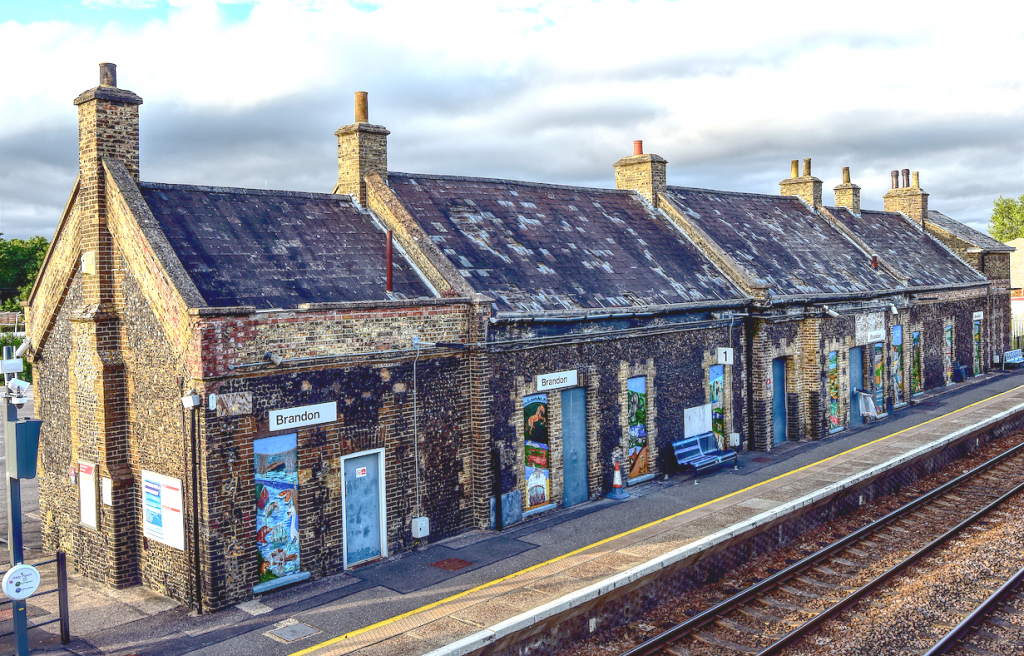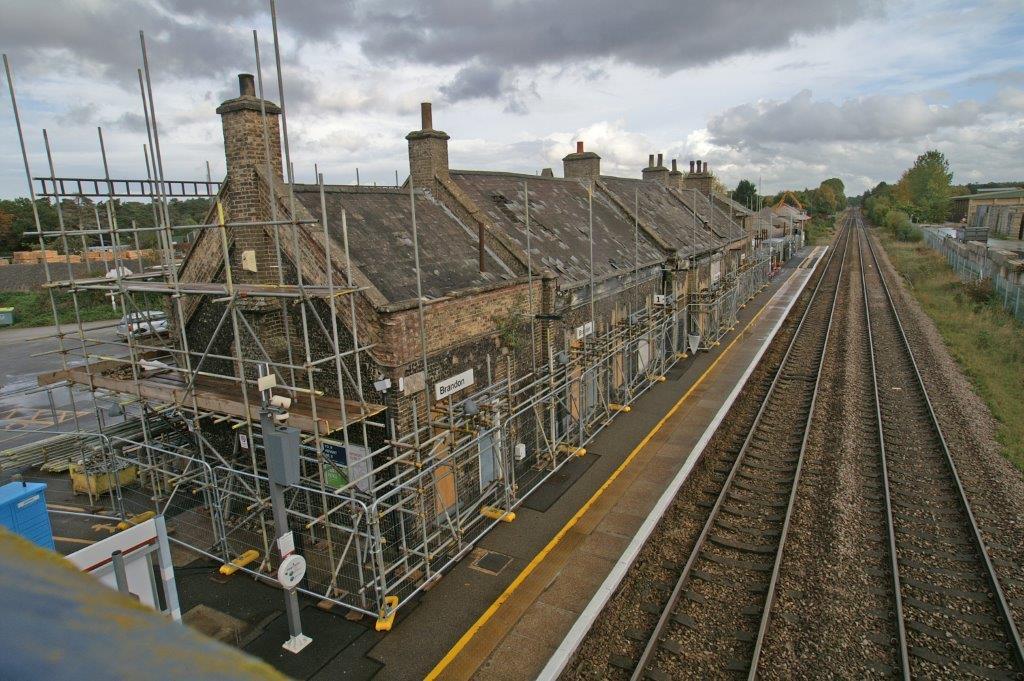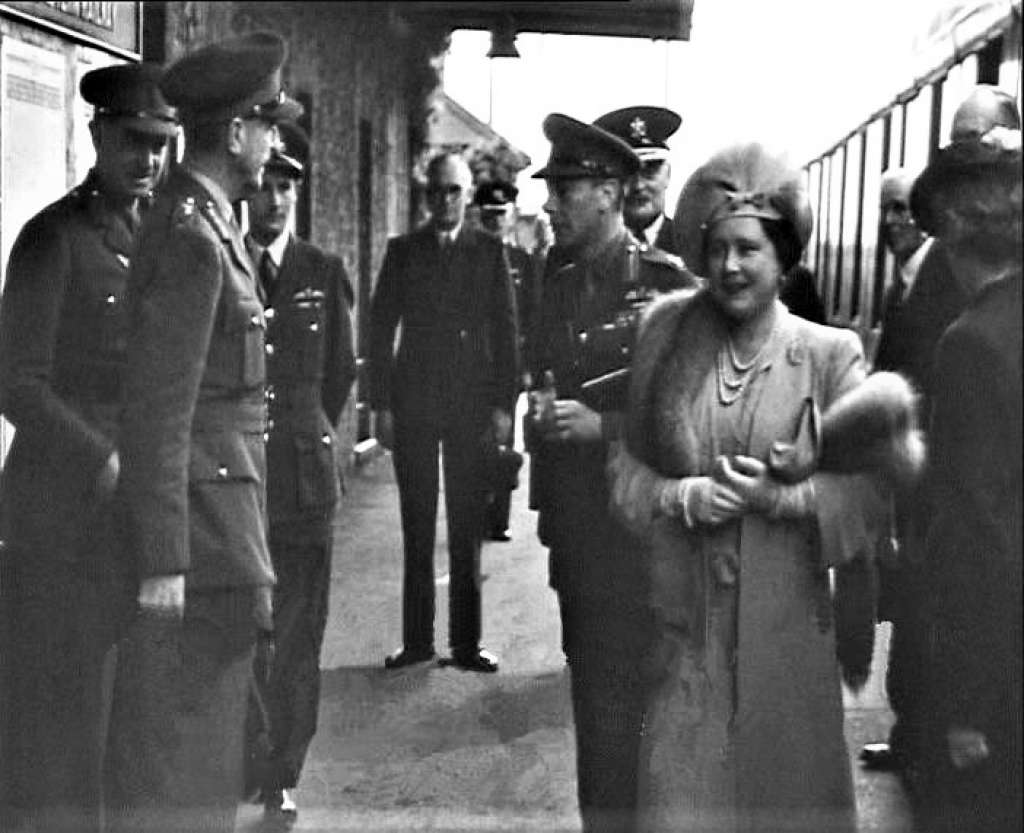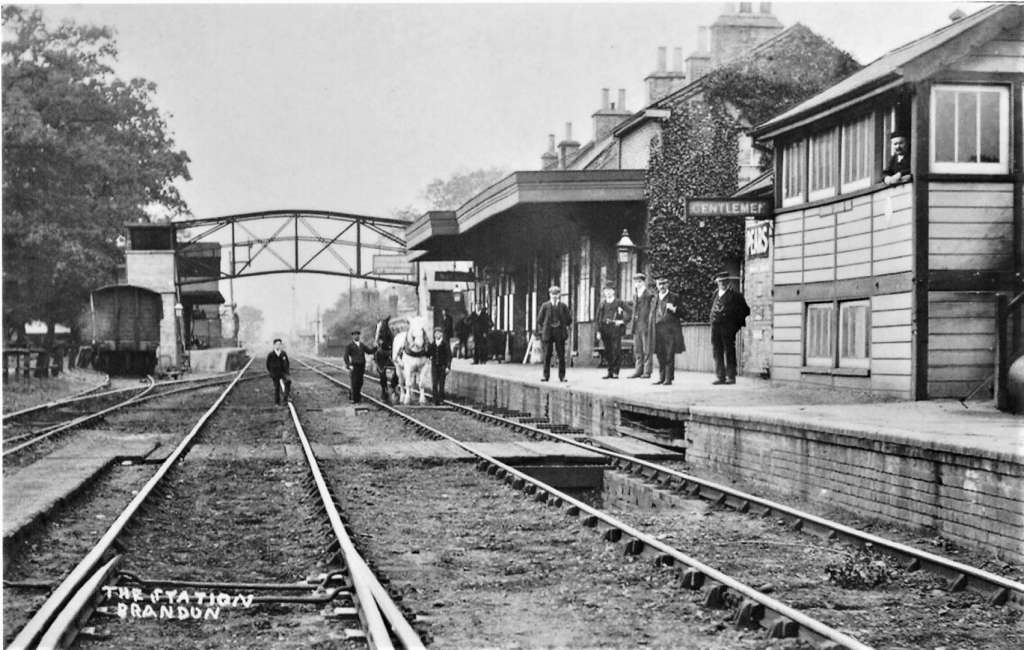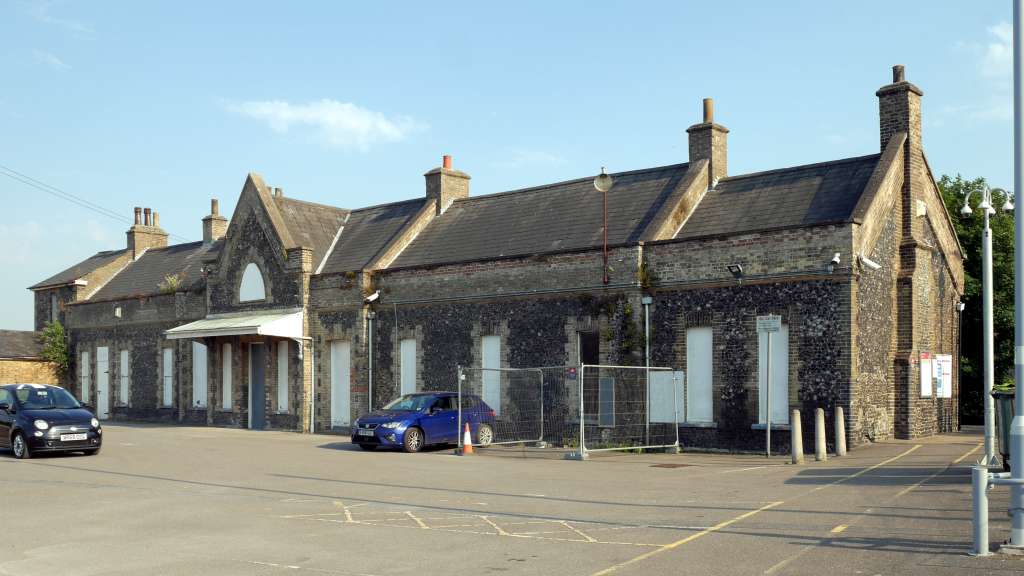BRANDON BACK ON TRACK: SAVE welcomes repair proposals for historic Suffolk station roof
21st March 2023
Swift intervention and specialist advice commissioned by SAVE averts demolition of roof at country station in favour of sensitive repairs
Swift legal action by SAVE Britain’s Heritage has successfully stopped train operator Greater Anglia (GA) from ripping the entire roof off the listed station building at Brandon, Suffolk, which is one of Britain’s earliest railway stations.
Subsequent specialist advice commissioned by SAVE from structural engineers The Morton Partnership has helped inform a less destructive approach, with GA now proposing to undertake localised repairs to stabilise the flint building and repair the roof structure.
GA suddenly closed the building and one platform on 1st March 2023, saying its condition had deteriorated and posed a risk to the public. It claimed that demolishing the vast majority of the roof was the only means of stabilising the building.
With contractors already appointed and on site, all set to commence demolition, a letter from lawyers acting for SAVE - barrister Richard Harwood OBE KC and solicitor Susan Ring of Harrison Grant Ring – on 3rd March 2023 warned the plans would constitute criminal action if undertaken and risked leaving the structure likely to collapse completely.
Our position was backed by local planning authority Breckland District Council, which took immediate and decisive action, issuing a letter to GA confirming that to avoid criminal proceedings they and their contractors were to cease all demolition works.
With demolition halted, and at its own expense, SAVE commissioned Ed Morton, one of Britain’s leading historic building structural engineers, to visit and assess the building’s condition to determine whether such drastic works were necessary, or whether a less destructive solution was possible.
Mr Morton’s findings, submitted to GA within 24 hours of his visit, concluded that such an approach was indeed possible, with localised repair and support to one failing roof truss sufficient to stabilise the structure. His view was echoed by fellow expert historic buildings architect Roderick Shelton, who previously undertook a full condition survey of the building in 2022 for the Suffolk Building Preservation Trust.
As a result, we are pleased to report that Greater Anglia has now heeded this advice and submitted new proposals to undertake localised repair and stabilisation works, which have been given the go ahead by the council, and received the blessing of Mr Morton.
We understand that GA have already commenced preparations for the repair schedule approved by the planning authority last week, with the repair work likely to be finished by the end of the month, we hope.
The council is monitoring the situation closely with the assistance of Mr Morton.
Ben Dewfield-Oakley, conservation officer for SAVE Britain’s Heritage, said: “The responsibility for this listed building falling into such a parlous state lies solely at GA’s door, following 10 years of little or no maintenance under its care. Now is the time for GA to show railway passengers and authorities alike that it does care about the nation’s railway heritage and takes its legal duties to protect listed buildings seriously. There is no better way to do this than by getting on with the job and repairing Brandon Station.”
Ed Morton, managing director of The Morton Partnership, said: “We are delighted that Greater Anglia has now put forward an option which allows for safe access, to support and then repair this important historic rail-side building."
Piers Hart, chairman of Suffolk Building Preservation Trust, said: “The Trust is very relieved that prompt action by SAVE and Breckland Council has saved Brandon Station from yet another attempt at demolition. We sincerely hope that Greater Anglia will now work constructively with all those who cherish this important piece of local railway heritage, to redress the damage caused by years of neglect.”
Back story
The new threat to Brandon Station comes just two years after SAVE won a High Court case in May 2020 to stop Greater Anglia’s plans to demolish the building, after it had been approved by the local council despite a 14-year campaign by local people to protect the much-loved building.
At the same time we supported a successful application by Suffolk Building Preservation Trust to have the building listed at grade II.
This latest battle also comes hot on the heels of a meeting with GA three weeks ago, where it confirmed to SAVE that a much delayed programme of works was about to commence to provide a protective roof covering over the station and to actually fix the roof structure.
In our letter sent to GA on 3rd March 2023, we advised that the drastic approach proposed by GA to remove the entire station roof, including chimneys, pediments and parapet walls, would constitute criminal damage to a grade II listed building and that demolition works as proposed must not commence.
History
The little 1845 station, constructed with knapped flint, is believed to have been designed by one of the greatest sculptors of the age, John Thomas. Thomas rose from the humblest beginnings to win patronage from the Prince Consort, and went on to design Peto’s imposing country house at Somerleyton in Suffolk and the estate village where the cottages have a family resemblance to Brandon Station.
Brandon also featured in a 1968 episode of the popular British comedy Dad's Army, and remains a tourist attraction for location tours run by the nearby Dad’s Army Museum in Thetford.
Brandon served as the terminus station connecting two of Norfolk’s most historic railway lines: the Norfolk Railway (formerly the Norwich & Brandon) and the Eastern Counties Railway.
Brandon flint was used both for the station and much of the town itself, during the Second World War, and the town became the leading supplier of military gunflint for the British Army. The station also served as the main station for the American Airforce at nearby RAF Lakenheath and AAF Mildenhall, with large sidings installed, known as the American Sidings.
Although the station is still a well used stop on the main line from Cambridge and Norwich, the station offices were closed in 1978 and up until September 2004 were leased to a building company. They are now empty and boarded up.
SAVE and the Suffolk Building Preservation Trust believe the buildings could have a viable future as community facilities or offices.
ENDS
Note to editors
1. For more information contact Ben Dewfield-Oakley, conservation officer at SAVE Britain's Heritage – ben.dewfieldoakley@savebritainsheritage.org/ 020 7253 3500
2. Read about the successful campaign to have the station listed in 2020 and more on the building's fascinating history in our press release HERE
3. See the full story on our initial intervention earlier this month to halt Greater Anglia’s initial plans which would have demolished the entire station roof, trusses, chimneys and more HERE
4. Read Historic England's listing description HERE
5. SAVE Britain’s Heritageis an independent voice in conservation that fights for threatened historic buildings and sustainable reuses. We stand apart from other organisations by bringing together architects, engineers, planners and investors to offer viable alternative proposals. Where necessary, and with expert advice, we take legal action to prevent major and needless losses

